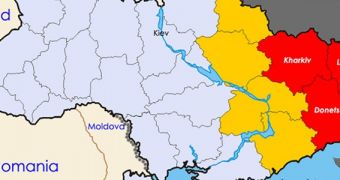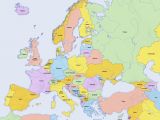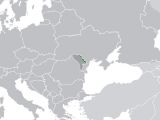First of all, let me start by saying that this is just a game. Granted, it is a game played with the fate of nations and of millions of people on the line, but it is a game nonetheless. Geopolitics has always been like that, and will probably remain so for a very long time. What Vladimir Putin, the president of the Russian Federation, is doing is nothing more and nothing less than others have done in the past.
His country's annexation of Crimea has set the world in an uproar, but the issue was extremely complicated to begin with, and is constantly made even more so by provisions in several international treaties. What is clear however is that Russia has a vested interest in eastern and southern Ukraine, and possibly beyond, as we shall soon see.
If we are to be on the same page, I have to tell you right off the bat that I am making some assumptions when writing this that are constantly denied by Moscow, and difficult to prove for countries in the European Union and the United States. The reason I am making these assumptions are mostly historical, informed by similar activities and operations that have taken place over the past couple of centuries. Taking the current geopolitical crisis out of its historical context would be a grave mistake.
Assumptions
The first and most important assumption is that Russian special forces (SPETSNAZ troops) of the Main Intelligence Directorate of the General Staff of the Armed Forces (GRU) are already operating on Ukrainian soil, particularly in the eastern regions of Luhansk, Donetsk, and Kharkov. This statement is supported by a recent announcement from the Interim President of Ukraine, Oleksandr Turchynov.
The second assumption is that Russia has a vested interest in fostering civil unrest in eastern Ukraine, and especially in the three regions I have mentioned earlier. The approach that Putin and his strategists take is comparable to the one that Adolf Hitler took when annexing the Sudetenland in Czechoslovakia.
At the time, the Nazi leader said that ethnic German population in this area was suffering privations, and that he was only defending the interests of people living in that region. Putin has the exact same rhetoric when he urges the Ukrainian government not to interfere as his special troops seize control of public buildings in the Luhansk, Kharkov and Donetsk.
Another thing that should be taken for granted despite denials is that both the GRU and elements of the FSB (the Russian Federal Security Service) seek to destabilize the country, with the purpose of promoting so-called free referendums in each region. This would give Putin the excuse he needs to say that he did not annex any region, but rather people living there willingly sought unification with Russia.
The tactics used here should not be news to anyone, since they are the same employed by the US Central Intelligence Agency (CIA) in South America between the 1960s and the 1980s. Subversive activities continue in countries with socialist sympathies, and this is the well-defined role of the CIA. The FSB has similar attributions in Russia, but engages in numerous other types of activities as well.
Another thing to keep in mind is that Putin's discourse – although it may seem unpolished or brutal in diplomatic terms at first – is cleverly constructed to mislead and hijack attention from the real problems at hand. This has always been the Russian style of diplomacy, somewhat strongly worded and insidious at the same time, and has worked great until now.
The final assumption I am making is that Russia will not shy away from facing NATO, the United States, or the European Union on the Crimean and Ukrainian issues. I can just as easily tell you that Putin will never allow NATO presence on Russia's doorsteps. It is equally stupid of NATO forces to believe that Russia will ever allow itself to be cornered the same way Iran did.
Geopolitics
Crimea
With this in mind, let's move forward to some geopolitical aspects of the current crisis. An important thing to keep in mind is that Crimea has a very important strategic position for Russia. At the same time, it is widely considered to be one of cradles of the Russian people, so its passing to Ukraine a few decades ago did not sit well with many Russians, and still doesn't sit well today.
The Crimean Peninsula is tied to Ukraine via a land bridge. This is important because Russia now has the region, but cannot access it without having to pass through southern Ukraine. A plan has already been announced in Moscow to build a large bridge at the narrowest point between Russia and Crimea, but such a piece of infrastructure would be catastrophically sensitive to military attacks.
One of the reasons why Putin is interested in breaking apart Ukraine may be to ensure Moscow's access to Crimea at any time. Another could be to reduce Ukraine's influence in the Black Sea basin, which is shared between Bulgaria, Romania, Ukraine, Russia, Georgia, and Turkey. Some commentators have accused Putin that he plans to turn the Black Sea into a Russian-dominated lake.
Depriving Ukraine of its link to the see would have disastrous economic consequences for the already embattled nation, leading to loss of jobs, popular dissatisfaction, and an increased risk for further conflicts in the region. One of the ways to address this would be for the EU or the US to help the country out financially. We'll get to the financial aspects of this crisis in a second.
Transnistria
Many people have never even heard of Transnistria until today. This is a breakaway state/territory located on the northeastern border of the Republic of Moldova. The latter borders Romania to the west, and Ukraine on all other sides. Transnistria broke away from Moldova in 1990. The reason why this is important is that around 1,200 troops of the former Soviet 14th Guards Army are still there.
Russia made a commitment at the OSCE Summit held in Istanbul in 1999 to withdraw its troops from Transnistria. These soldiers played a pivotal role in the Moldovan-Transnistrian war of 1992, heavily tipping the balance in favor of the latter, and allowing the region to break away from Moldova. This enabled Russian presidents to use this area as leverage in their negotiations with the European Union.
One of the most important conditions that a candidate country must adhere to in order to be allowed as a Member State of the EU is to have secured, well-defined and stable borders. Since Transnistria is recognized as a state by exactly no one except Russia, its mere existence precludes the admission of both Moldova and Ukraine into the EU.
The stake here is that Russia, and the Soviet Union before it, has traditionally held so-called buffer zones between its territory and that of NATO countries. Until the ousting of the former Ukrainian pro-Russian President, Viktor Yanukovych, this role was fulfilled by Ukraine and Belarus.
However, the former was contemplating entering talks with the EU, for signing various cooperation agreements that would have set the stage for the country's admission into the Union. This did not sit well at Moscow, since this would have been the very first step towards the neighboring state's admission into NATO. This was unacceptable to Russia, and everyone knew that.
In a sense, Putin's annexation of Crimea was a warning issued to the West, a preemptive action of the same type the United States undertook to start wars in Iraq and Afghanistan. The Russian president essentially told the world that there will never be NATO vessels moored in Crimea. Land-locking Ukraine would prevent these potential ships from docking in any other port.
Southwestern Ukraine
While the justification of keeping Russian ethnics safe works for the eastern parts of the country, the western provinces in Ukraine are mostly pro-West, and would never vote for unification with Russia in a referendum. This is where Transnistria again comes into play, providing a point of instability and threat to the southwestern flank of Ukraine.
Therefore, in addition to keeping the EU from advancing eastwards through Moldova, Transnistria also keeps Ukraine in check, and provides additional justifications for a Russian intervention in southern Ukraine. My bet is that what Putin is really interested in is establishing a direct land corridor through this area, which would span parallel to the shores of the Sea of Azov and the Black Sea, all the way to Transnistria.
An added effect of such a cut-off would be the separation of the Odessa Oblast (or province) in two. The area is already heavily segmented by the eastern tip of the Republic of Moldova, and parts of Transnistria, but in the event of annexation of the latter, its southern half would be separated from the rest of Ukraine, and most likely taken by Russia.
This would give Vladimir Putin access to the northern mouths of the Danube and its beautiful delta, one of the most biodiverse places on Earth, and a significant economic pathway through Europe. Russia would thus face access to yet another major river in Europe, besides Volga, Don, Kama, Oka and the Northern Dvina, as well as a multitude of others that flow into the Arctic and Pacific Oceans.
This is the end of Part I of this editorial. For Part II, check back on Saturday, April 19. In the meantime, let me know your thoughts on the Ukrainian crisis and this article in the comments section below.

 14 DAY TRIAL //
14 DAY TRIAL // 

